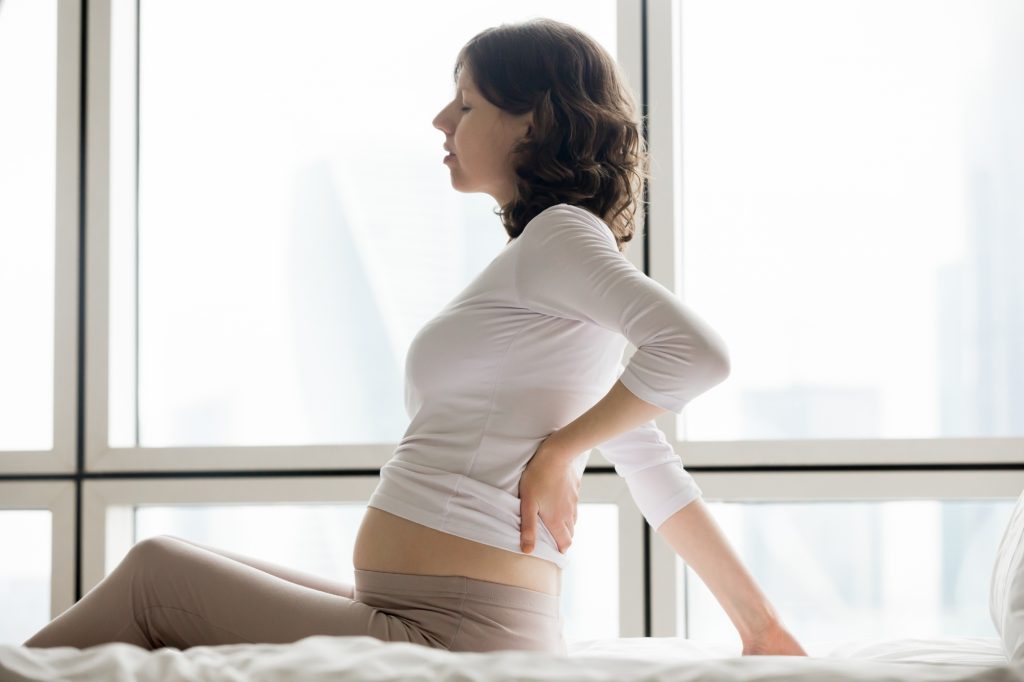Discover the relationship between weight gain in specific body areas and its impact on back pain.
Can Weight Gain in Specific Body Areas Disproportionately Affect Back Pain?
Weight gain is a common concern for many people, and its impact on our overall health is well known. But have you ever wondered if weight gain in specific body areas could disproportionately affect back pain? It’s an intriguing question that we’re here to explore!

Understanding the Relationship Between Weight Gain and Back Pain
When it comes to weight gain and back pain, there’s a fascinating scientific connection that’s worth delving into. Researchers have found that excess weight can put additional stress and strain on the spine, leading to discomfort and pain. But how exactly does this work? Let’s take a closer look!
The Science Behind Weight Gain and Back Pain
Our bodies are designed to distribute weight evenly, but when we gain extra pounds, certain areas may bear the brunt of the burden. This uneven distribution can create imbalances in our posture and movement patterns, leading to back pain. Additionally, increased body fat can contribute to inflammation in the body, including the spine, further exacerbating discomfort.
When we gain weight, our center of gravity shifts, placing more pressure on the lower back. This can cause the natural curve of the spine to become exaggerated, leading to strain on the muscles, ligaments, and discs in the back. The added weight can also compress the spinal nerves, resulting in radiating pain down the legs.
Furthermore, excess weight can weaken the core muscles, which play a crucial role in supporting the spine. When these muscles are weakened, the spine is left vulnerable to injury and strain. This can lead to chronic back pain that becomes increasingly difficult to manage.
The Impact of Obesity on Spinal Health
Obesity, defined as having a body mass index (BMI) of 30 or higher, is a significant factor in the development of back pain. The excess weight can strain the structures of the spine, causing wear and tear over time. In fact, studies have shown that obese individuals are more likely to experience chronic back pain compared to those with a healthy weight. It’s a clear indication of the impact weight gain can have on our backs.
Moreover, obesity is often accompanied by a sedentary lifestyle, which further contributes to back pain. Lack of physical activity weakens the muscles that support the spine, making it more susceptible to injury and discomfort. Additionally, obesity is associated with systemic inflammation, which can affect the spinal joints and contribute to pain and stiffness.
It’s important to note that weight loss can have a positive impact on back pain. Shedding excess pounds can alleviate the strain on the spine, reduce inflammation, and improve overall spinal health. Incorporating regular exercise, such as low-impact activities and core-strengthening exercises, can also help support the spine and prevent future pain.
In conclusion, the relationship between weight gain and back pain is a complex one. Excess weight can lead to imbalances in posture, inflammation in the spine, and strain on the supporting structures. Understanding this connection can empower individuals to take proactive steps towards maintaining a healthy weight and preventing back pain in the long run.
The Role of Body Fat Distribution in Back Pain
Now that we understand the overall connection between weight gain and back pain, let’s explore how specific areas of fat accumulation can contribute to discomfort.
When it comes to body fat distribution, not all areas are created equal. Different regions of the body can have varying effects on our backs, leading to pain and discomfort. Understanding these connections can help us take proactive steps towards managing and preventing back problems.

How Abdominal Weight Gain Contributes to Back Pain
When we gain weight around our abdomen, it can pull our pelvis forward, affecting the natural curvature of our spine. This postural change can place increased stress on the lower back, leading to pain and discomfort. So, that spare tire around your waistline could be more than just an aesthetic concern – it could be contributing to your back problems!
Furthermore, excess abdominal fat can also lead to the release of inflammatory substances, such as cytokines, which can contribute to chronic inflammation in the body. This chronic inflammation can further exacerbate back pain and make it more challenging to find relief.
The Effect of Upper Body Weight Gain on Back Pain
Weight gain in the upper body, such as the chest and shoulders, can also affect our backs. The extra weight in these areas can pull the shoulders forward and strain the muscles of the upper back. Over time, this can lead to poor posture, muscle imbalances, and, you guessed it, back pain.
Additionally, upper body weight gain can alter the alignment of the spine, particularly in the thoracic region. This misalignment can put pressure on the nerves that run through the spine, causing pain and discomfort. It can also restrict the range of motion in the upper back, making everyday activities more challenging and potentially leading to further issues down the line.
It’s important to note that body fat distribution can vary between individuals. Some people may naturally carry more weight in their abdominal region, while others may have a tendency to accumulate fat in their upper body. Understanding your own body’s tendencies can help you tailor your approach to managing back pain and maintaining a healthy weight.
Overall, body fat distribution plays a significant role in back pain. Whether it’s excess weight around the abdomen or upper body, these areas can impact our posture, spinal alignment, and overall musculoskeletal health. By addressing these factors and adopting a holistic approach to weight management, we can reduce the risk of back pain and improve our overall well-being.
The Connection Between Lower Body Weight Gain and Back Pain
Now, let’s shift our focus to the lower body and explore how weight gain in specific areas like the hips, thighs, and gluteal region can impact our backs.
Weight gain is a common concern for many individuals, and it can have various effects on our overall health. While we often associate weight gain with aesthetic concerns, such as fitting into our favorite pair of jeans or feeling confident in a swimsuit, it’s essential to recognize that it can also have significant implications for our physical well-being.
Hip and Thigh Weight Gain: Implications for the Spine
When we carry excess weight in our hips and thighs, it can affect our spinal alignment. The added pressure on the pelvis can disrupt the natural curvature of the spine, leading to discomfort in the lower back. So, those “love handles” might not be so lovely for your back!
Imagine your spine as a perfectly balanced structure, with each vertebra stacked on top of the other, creating a gentle curve. However, when excess weight accumulates in the hips and thighs, it can tilt the pelvis forward, altering the alignment of the spine. This misalignment can put strain on the muscles, ligaments, and discs in the lower back, resulting in pain and discomfort.
Furthermore, the excess weight in the hip and thigh area can also lead to muscle imbalances. As certain muscles become weaker due to inactivity or lack of exercise, others may become overworked and strained. This imbalance can further contribute to back pain, as the muscles that support the spine are not functioning optimally.
The Impact of Gluteal Fat on Back Health
While having a little extra junk in the trunk might be celebrated in certain contexts, it can actually contribute to back pain. Excessive fat in the gluteal region can alter the biomechanics of the hip joints and strain the muscles and ligaments that support the lower back. So, maybe it’s time to rethink those squats!
The gluteal muscles, commonly known as the buttocks, play a crucial role in stabilizing the pelvis and supporting the spine. However, when excess fat accumulates in this area, it can disrupt the natural movement patterns of the hip joints. This disruption can lead to imbalances in muscle activation and coordination, putting additional stress on the lower back.
Moreover, the gluteal region is home to several large muscles, including the gluteus maximus, medius, and minimus. These muscles work together to provide stability and power during movements like walking, running, and lifting. However, when excess fat is present, it can impede the proper functioning of these muscles, leading to decreased strength and stability in the lower back.
It’s important to note that weight gain in the lower body is not solely responsible for back pain. Other factors, such as poor posture, lack of exercise, and genetic predispositions, can also contribute to this common issue. However, by understanding the connection between weight gain in specific areas like the hips, thighs, and gluteal region, we can take proactive steps to mitigate the risk and prioritize our back health.
Mitigating Back Pain Through Weight Management
Now that we’ve explored the connection between weight gain in specific body areas and back pain, let’s discuss some strategies for managing and reducing discomfort.
The Importance of a Balanced Diet for Spinal Health
Eating a balanced diet rich in nutrients is crucial for maintaining a healthy weight and supporting spinal health. Including plenty of fruits, vegetables, lean proteins, and whole grains can help prevent excessive weight gain and reduce inflammation in the body. Your back will thank you for making nutritious choices!
Exercise and Its Role in Reducing Back Pain
Regular physical activity is a powerful ally in the fight against back pain. Engaging in exercises that strengthen the core, improve flexibility, and promote good posture can help alleviate discomfort and prevent future issues. So, lace up those sneakers and get moving for a healthier, happier back!
Medical Interventions for Weight-Related Back Pain
For some individuals, weight-related back pain may require additional medical interventions. Let’s explore some non-surgical and surgical options that can provide relief.
Non-Surgical Treatments for Weight-Related Back Pain
Non-surgical interventions for weight-related back pain may include physical therapy, chiropractic care, acupuncture, and medication. These treatments aim to reduce inflammation, alleviate pain, and improve mobility without the need for surgery. Consulting with a healthcare professional can help determine the best course of action for your specific situation.
Surgical Options for Severe Cases of Back Pain
In severe cases where conservative treatments have not provided relief, surgical interventions may be considered. Procedures such as spinal fusion, laminectomy, or discectomy can be performed to address specific issues contributing to back pain. However, surgery is typically reserved for cases where all other options have been exhausted.
The Bottom Line
So, can weight gain in specific body areas disproportionately affect back pain? The answer is a resounding yes! Excess weight, particularly in the abdomen, upper body, and lower body, can strain the spine, alter posture, and lead to discomfort. However, by managing our weight through a balanced diet, regular exercise, and seeking appropriate medical care, we can mitigate and alleviate weight-related back pain. Your back is an incredibly important part of your overall health, so let’s give it the care and attention it deserves!



